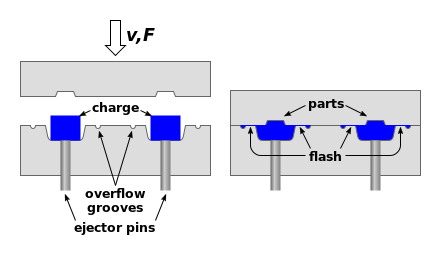Compression Molding?

technical process:
A method of?molding?in which the molding magnetic material, generally preheated, is first placed in an open, heated. The mold is closed with a top force or plug member, pressure is applied to force the material into contact with all mold areas, while?heat?and?pressure?are maintained until the molding material has cured. The process employs thermosetting?resins?in a partially cured stage,?Compression molding with high cost performance when higher volumes are required?compression molded magnets?are best produced in tens or hundreds of thousands of magnets per production run, with a very low break even point with magnet molding machine.
Advantages:
- A higher ratio of magnetic material powder to binder gives higher magnetic performance than the injection molded magnets;
- NdFeB, SmCo, Alnico and Ferrite etc can be supported
- Hybrid versions as well (e.g. Ferrite+NdFeB) with combined properties
- Good tolerances – secondary machining not needed
- Low electrical conductivity, low eddy currents
Disadvantages
- The compression bonding process is limited to simpler shapes such as rectangles, rings, arcs and cylinders. A consistent cross sectional area is required along the pressing direction
- Possible tooling charges for production and magnetizing
Typical Applications
- Motors
- Position sensors
- Hybrid performance components
- Inertial switch
- Automobile industry